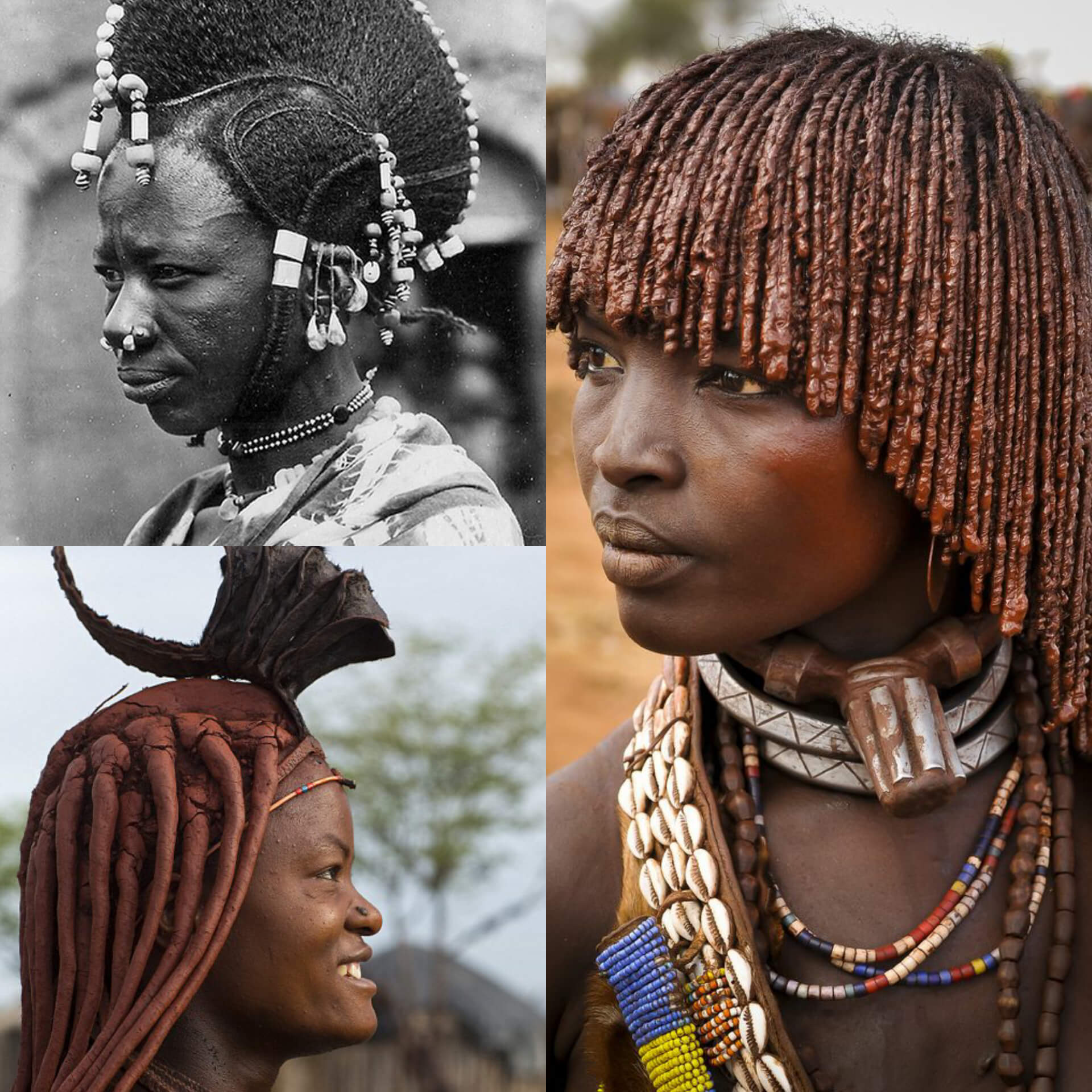
Celebrating Historical African Women’s Hairstyles
By Akinbola Esther
Hair!
Hair played a major Role in the Ancient African Culture and Civilisation. A Glamorous Hairdo came with different significance. It could symbolise one’s family background, social status, spirituality, marital status and tribe.
Back in the 15th century, Hierarchy could be sensed with these Hairstyles, you didn’t have to be told of Africans’ social status. For example, many Members of royalty wore elaborate hairstyles as a symbol of their stature.
Another Interesting Fact about Hair was that it was used to symbolise Fertility. An African woman with thick, long, and neat hair was said to be fertile and expected to give birth to Healthy children.
African Women’s Hairstyles
Ancient communities believed that hair helped with divine communication, with hair being an elevated part of one’s body, this belief is the reason why hair styling was entrusted to close relatives. A lot of Africans believed that if a strand of hair fell into the hands of an enemy, harm could come to the hair’s owner.
Hair was a prominent social activity, especially among women. People had the opportunity to socialize while styling each other’s hair. The communal tradition of hair still exists today.
You don’t have to be told that Africa is rich with ancient hair traditions and styles, here’s a history of notable hairstyles and hair traditions from across the continent.
· Dreadlocks from the Himba tribe of Northwestern Namibia

Tribe members use a mixture of ground ochre, goat hair, and butter to create their dreadlocks. They also include hair extensions when weaving their dreadlocks. Teenage girls wear braid strands or dreadlocked hair that hangs over their faces.
For the Himba tribe, hair indicates one’s age, life stage, and marital status. The tribe lives in the northwestern region of Namibia.
This Hairstyle is done with a mixture of ground ochre, goat hair, and butter to create their dreadlocks. They also include hair extensions when weaving their dreadlocks.
When you see Teenage girls wear braid strands or dreadlocked hair that hangs over their faces, then it means they’ve entered into puberty.
Married women and new mothers wear Erembe headdresses made from animal skin. Young women who are ready for marriage tie their dreadlocks to reveal their faces.
Unmarried men wear a single braid to show their status. Once they get married, they cover their heads never to unveil them in public again. They remove their head covering at funerals only.
· Fulani Tribe Of The Sahel Region And West Africa – Braids And Beads

The Fula, or Fulani tribe, is the largest nomadic tribe in the world. They populate the Sahel region and West Africa.
The tribe’s traditional hairstyle is a big trend in contemporary braiding. Hair stylists have named it Fulani braids.
Women plait their hair into five long braids that they hang or loop on the side of their heads. They complete the hairstyle with a coiffure in the middle of the head. They decorate their hair with beads and cowrie shells.
Young girls attach their family’s silver coins and amber on their braids as a heritage symbol. They also add coins and amber for aesthetic purposes. This tradition is one that families have kept through the generations.
The Wodaabe tribe is a subgroup of the Fulani tribe that also resides in the Sahel region and West Africa. They are a pastoral nomadic tribe with an estimated population of 100,000.
Wodaabe girls and women wear their hair like their Fulani counterparts. They plait a few braids on their hair and add a coiffure in the middle.
They decorate their hair with beads and cowrie shells.
· Hamar Tribe In Ethiopia- Ochre Dreadlocks

The Hamar tribe is a pastoral community that lives in Ethiopia’s Omo Valley. The tribe has an estimated population of 20,000.
Hamar women wear thin ochre dreadlocks, called goscha, on their hair. They create their dreadlocks by binding water with resin. To add to their distinct look, women wear colorful beaded jewelry.

